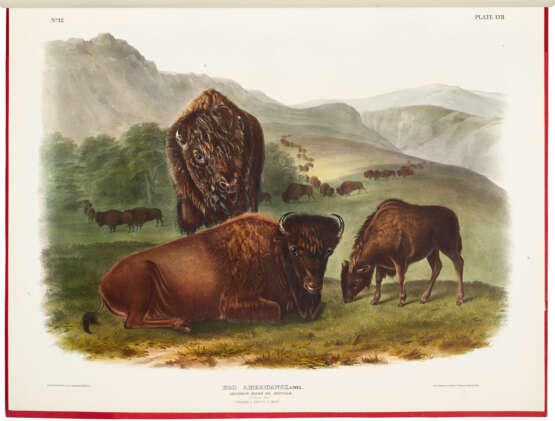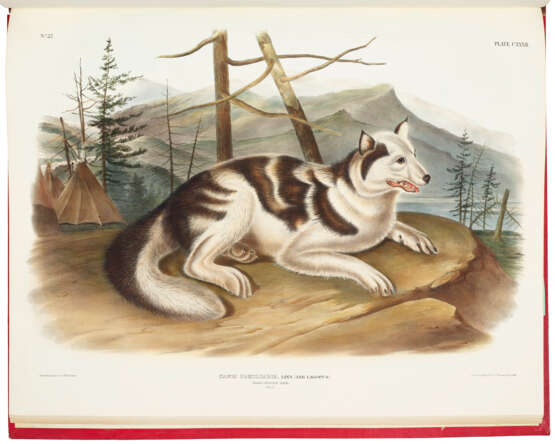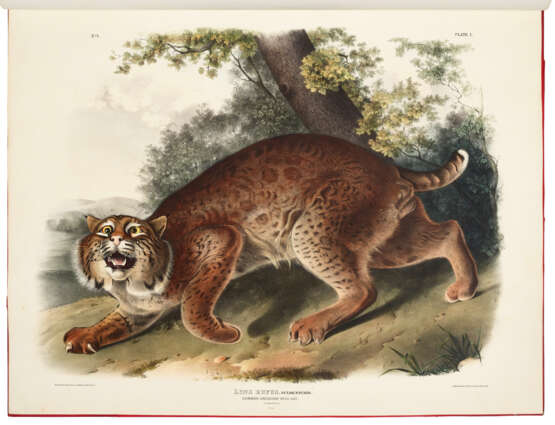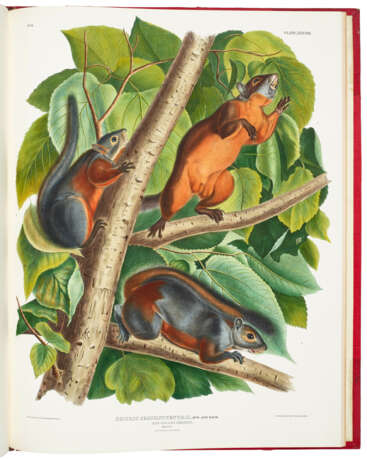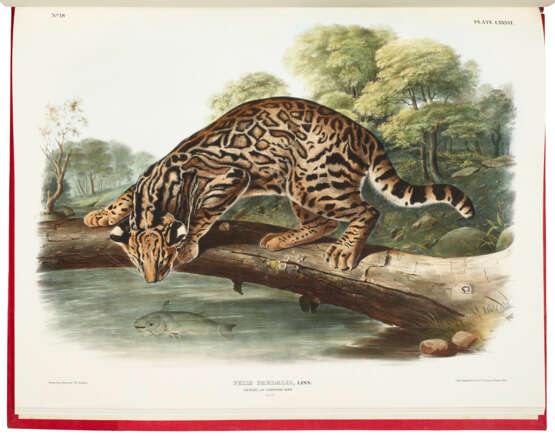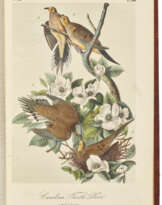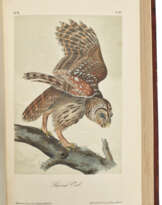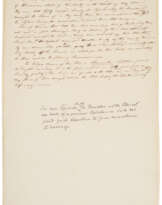ID 1119098
Lot 135 | The Viviparous Quadrupeds of North America
Valeur estimée
$ 180 000 – 250 000
John James Audubon, 1845-1848.
AUDUBON, John James (1785-1851), and BACHMAN, Rev. John (1790-1874). The Viviparous Quadrupeds of North America. New York: J.J. Audubon, 1845, 1848.
The first edition of Aububon’s folio Quadrupeds, the most ambitious of all color-plate books to be wholly produced in the United States. Audubon, the consummate woodsman and naturalist, made his first expedition across the Rockies to the Great Plains at the age of 58, in pursuit of mammals to draw for this edition. After an unsuccessful attempt to secure federal funding for his “Great Western Journey,” he determined that the commercial potential of the Quadrupeds was worth the risk to fund the expedition himself: “To render [the Quadrupeds] more complete, I will leave the comforts of my home and beloved family, bound to the Rocky Mountains … I cannot tell how long I may be absent, but look to return loaded up with knowledge, new and abundant specimens on the shot and not from stuffed museums’ moth-eaten remains. I am told that I am too old to undertake such a long and arduous journey, but I reply that having the will, I will no doubt safely bear or even surmount the difficulties” (letter to C. Bonaparte, Feb. 1843, quoted in Rhodes).
Audubon left St. Louis up the Missouri in April of 1843 along with a party of trappers and several Natives who had come to St. Louis for trade. Of the trappers, Audubon was astonished that their knowledge of animals was confined to useful furs only. However, Audubon enjoyed showing off his work to the Natives and one of his party, the naturalist Edward Harris, reported that one of the women actually ran away from Audubon’s specimen lithograph of the woodchucks, exclaiming that they were alive. After about 1000 miles, the party finally reached the prairie and a paradise of wildlife: elk, deer, bear, wolves in plenty, and buffalo by the thousands. Audubon was fascinated by the large animals. On his return home, he was soon in declining health and left many of the smaller mammals for his son, John Woodhouse, to draw. A little over half the animals are after John James Audubon, the remainder after his son, and the backgrounds are after his youngest, Victor Gifford, who also oversaw the printing and publication. It took the closely-knit Audubon family five years to publish the 150 plates, for which there were three hundred subscribers. The lithographer was J.T. Bowen—to whom the Audubons were also entrusting the octavo edition of the Birds. The Quadrupeds was the most successful large color-plate book to be produced in America in the 19th century. Audubon’s Quadrupeds remains one of the grandest and most beautiful depictions of American mammals ever produced. Bennett, p. 5; McGill/Wood, p.208; Nissen ZBI 162; Stamped with a National Character 36; Sabin 2367. See Rhodes, John James Audubon: The Making of an American, 2004, pp. 417 ff.
Three plate volumes, broadsheet folio (687 x 535 mm). With three lithographed title-pages and three leaves of letterpress contents; 150 hand-colored lithographic plates after John James and John Woodhouse Audubon, backgrounds after Victor Audubon, by J.T. Bowen (a little rippling to beginnings of vols 1-2, i.e. prelims and first two or three plates; vol. 3 prelims with a crease; pls. 41, 46, 51, and 103, lightly toned; pl. 41 with a little offsetting; small stain in sky of pls. 49 and 109; crease to pl. 52; scattered very small stains or smudges). Contemporary red morocco-grained sheep, spines richly gilt with raised bands, all edges gilt (hinges tender, upper covers started, particularly vol. 1, rubbed, bubbling to endpapers); housed in three custom cloth solander boxes. Provenance: Gardner A. Sage Library, Theological Seminary, New Brunswick (inkstamp on titles).
| Artiste: | John Bachman (1790 - 1874) John James Audubon (1785 - 1851) |
|---|---|
| Catégorie maison de vente aux enchères: | Livres imprimés |
| Artiste: | John Bachman (1790 - 1874) John James Audubon (1785 - 1851) |
|---|---|
| Catégorie maison de vente aux enchères: | Livres imprimés |
| Adresse de l'enchère |
CHRISTIE'S 20 Rockefeller Plaza 10020 New York Etats-Unis | ||||||||||||||
|---|---|---|---|---|---|---|---|---|---|---|---|---|---|---|---|
| Aperçu |
| ||||||||||||||
| Téléphone | +1 212 636 2000 | ||||||||||||||
| Fax | +1 212 636 4930 | ||||||||||||||
| Conditions d'utilisation | Conditions d'utilisation | ||||||||||||||
| transport |
Service postal Service de messagerie ramassage par vous-même | ||||||||||||||
| Modes de paiement |
Virement bancaire | ||||||||||||||
| Heures d'ouverture | Heures d'ouverture
|
